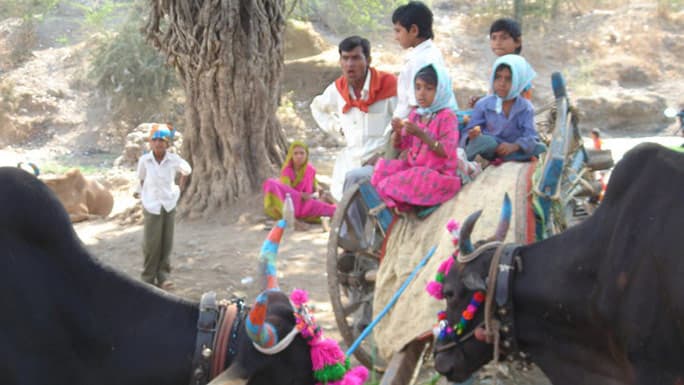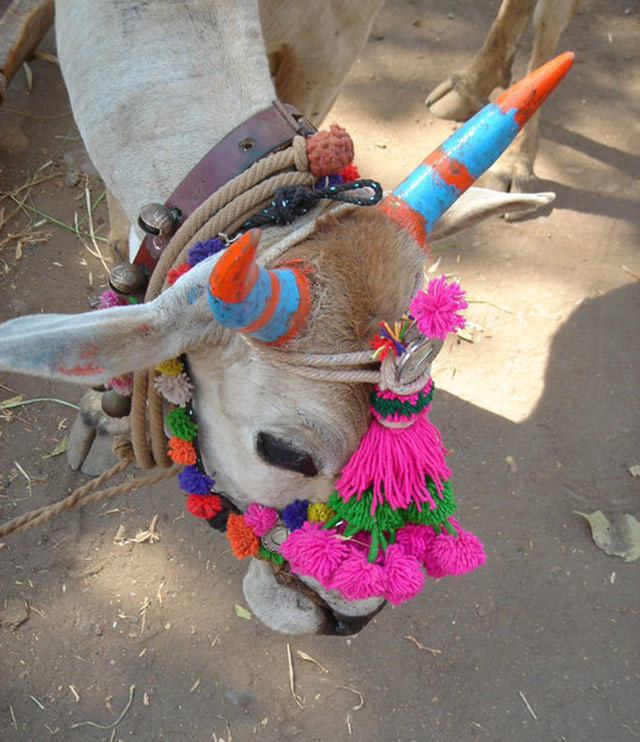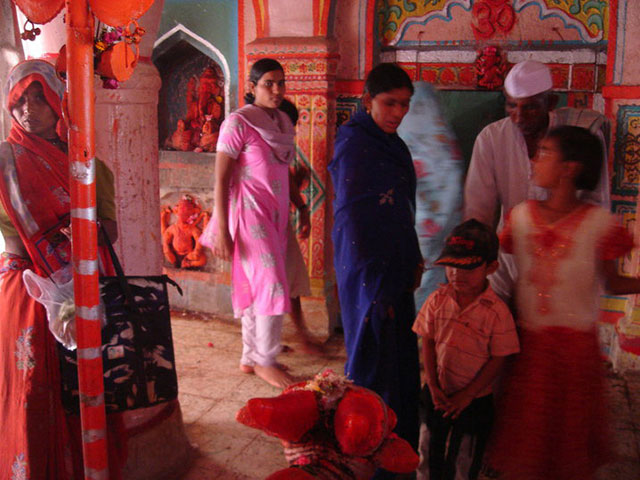Lactose tolerance in the Indian dairyland

One corner of the world where lactose tolerance has not been well studied is India. Cattle have a long history in India, both as an agricultural animal and a figure of worship. In fact, India has grown to become the world's largest producer of milk, using both cattle and water buffalo as dairy animals. Cheese, yogurt, and cream-based curries are a staple of the Indian diet, and many Indian citizens consider themselves lactose tolerant. But other than a few small studies, nobody had looked at whether Indians have their own unique mutation - or whether they were even as tolerant of dairy as commonly thought.
"India is fantastic because it's really, really diverse culturally and geographically," said Irene Gallego Romero, a post-doctoral researcher in the University of Chicago Department of Human Genetics. "They have a history of milk consumption, but nobody had looked at whether they were actually lactose tolerant or not."
Gallego Romero's research, conducted while a graduate student at the University of Cambridge and recently published in Molecular Biology and Evolution, allowed her to do more fieldwork than a genetics project typically allows. To collect samples, Romero went on two separate trips to India in 2008, spending two months each time traveling the country and asking for saliva samples from remote populations to assemble a truly countrywide data set. Along the way, there were some unforeseen technical obstacles to collecting samples from inhabitants of rural Indian villages: "It's really hard to get 2 milliliters of saliva from toothless men," Gallego Romero said.

The final tally included almost 2,300 individuals from 105 different tribes and castes, five different language families, 22 of 28 states, and even one group from Nepal. Romero and a team of researchers from the United Kingdom, Estonia, India, and the United States then zeroed in on the chromosomal region where most of the previously-detected lactose tolerance mutations are located. To the authors' surprise, what they found there was not a new India-specific mutation, but a familiar genetic pattern - a single switch from C to T, characteristic of the common European mutation.
"We thought they would have a different mutation, because they've had cattle for a long time and they've been drinking milk," Gallego Romero said. "But it was all European, except for a couple mutations that we haven't proven yet do anything. We were very shocked by that, it was interesting."
The finding suggests that the most common lactose tolerance mutation made a two-way migration out of the Middle East less than 10,000 years ago. While the mutation spread across Europe, another explorer must have brought the mutation eastward to India - likely traveling along the coast of the Persian Gulf where other pockets of the same mutation have been found, Gallego Romero said. Once the ability to take nourishment from milk in adulthood met the pastoralist cattle-herding cultures of northwest India, it made for the perfect evolutionary mix.
"All you need is a few people," Gallego Romero said. "It's not disadvantageous if you're not drinking milk, it's just sitting there, so it's going to drift like anything else that's neutral and then it's going to hit some advantageous population and spread," Gallego Romero said. "So then you have to ask the important question: Who decided to start drinking milk from a cow the first time?"
Another surprising fact was turned up by the researchers when they measure just how common the lactose tolerance mutation was among Indian populations. The mutation was found in less than 1 out of 5 individuals tested, a figure far lower than anticipated by many of the project's Indian advisors.

"When I became interested in this project, everybody said 'Everyone in India drinks milk,'" Gallego Romero said. "But when we got the results, we said, 'No, only 18 percent of people in India are digesting milk, nobody else is.'"
The mystery then is why so many people believe themselves to be lactose tolerant when they are in fact genetically unable to produce lactose into adulthood. One theory is that non-Europeans experience less severe symptoms of lactose intolerance, and thus may not notice the consequences of failing to digest dairy as much. Another answer comes from how Indians prepare their milk - often fermenting it to use as yogurt or paneer, which breaks down the lactose within.
"I guarantee you that if you make most Indians drink a big glass of milk, they will not come back to you saying everyone in India drinks milk any more," Gallego Romero said. Photos provided by Irene Gallego Romero.
Gallego Romero I, Basu Mallick C, Liebert A, Crivellaro F, Chaubey G, Itan Y, Metspalu M, Eaaswarkhanth M, Pitchappan R, Villems R, Reich D, Singh L, Thangaraj K, Thomas MG, Swallow DM, Mirazn Lahr M, & Kivisild T (2011). Herders of Indian and European Cattle Share Their Predominant Allele for Lactase Persistence. Molecular biology and evolution PMID: 21836184

